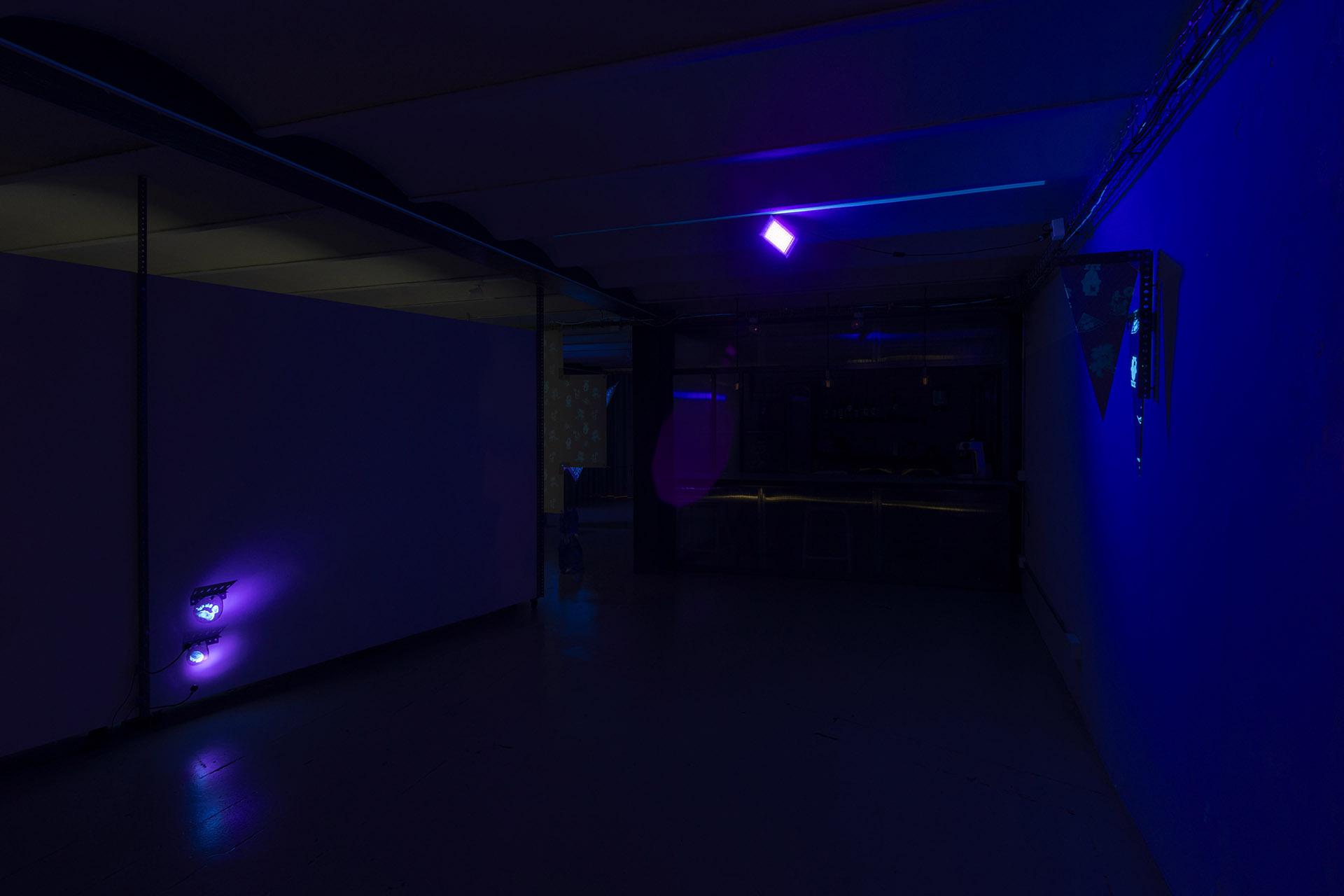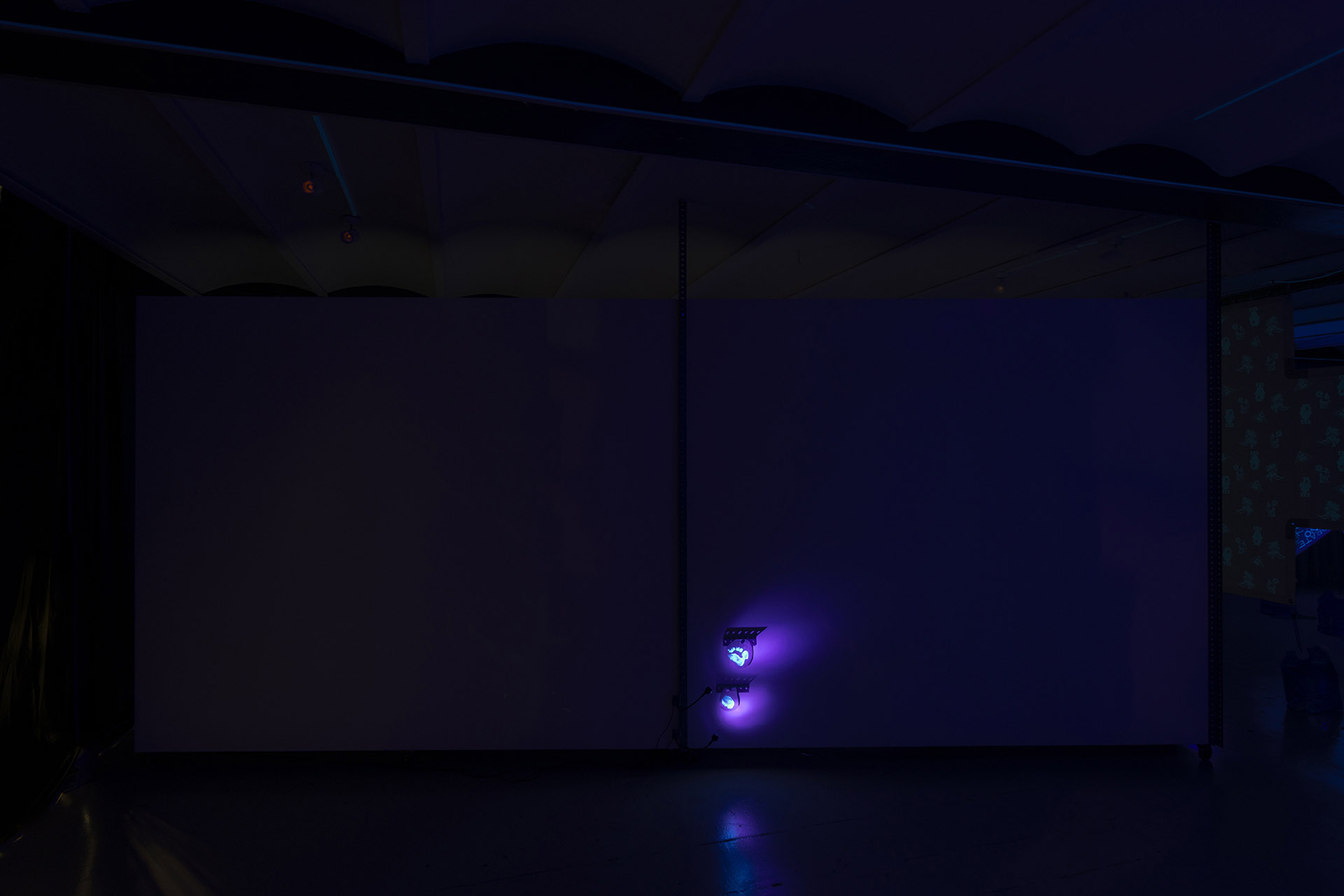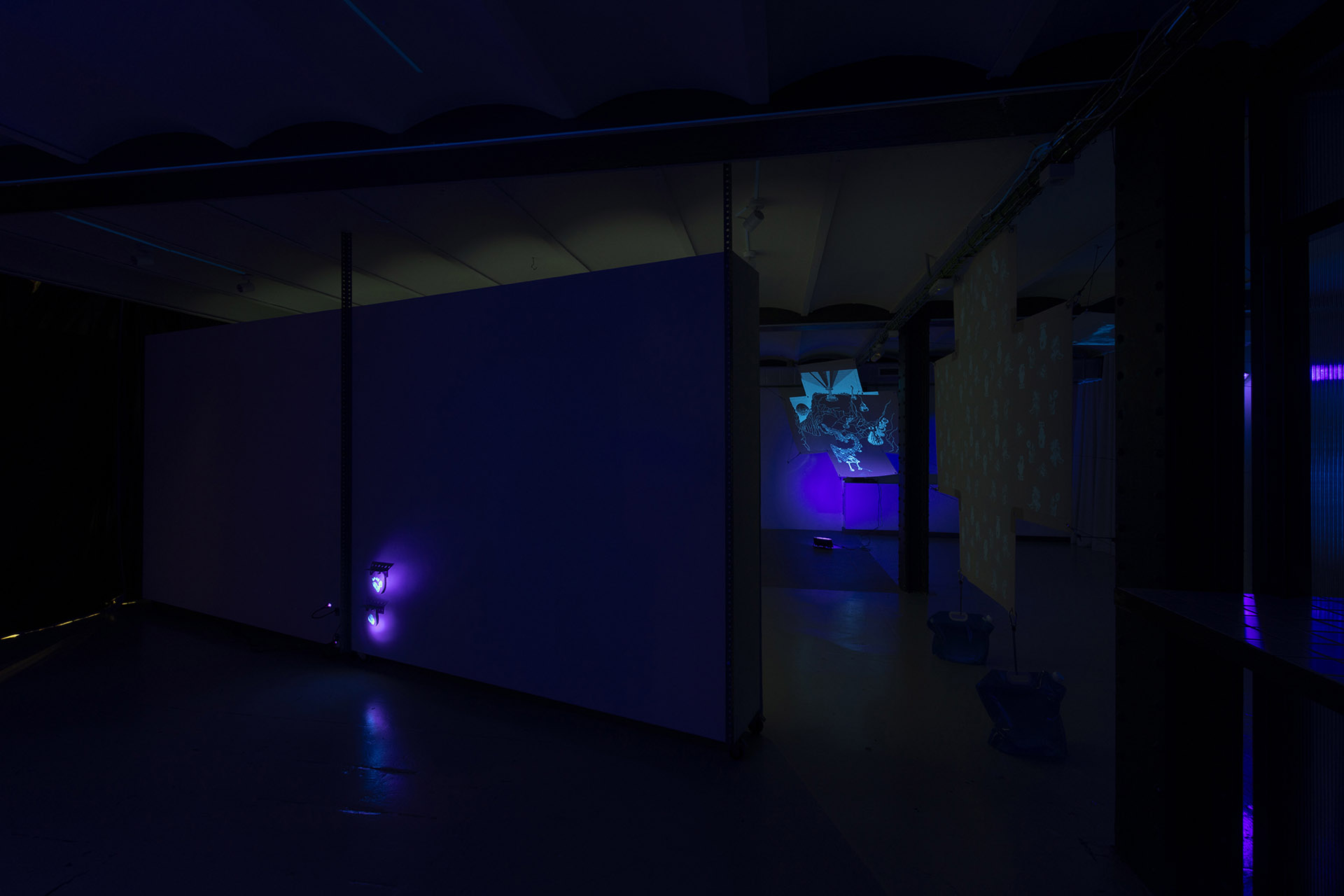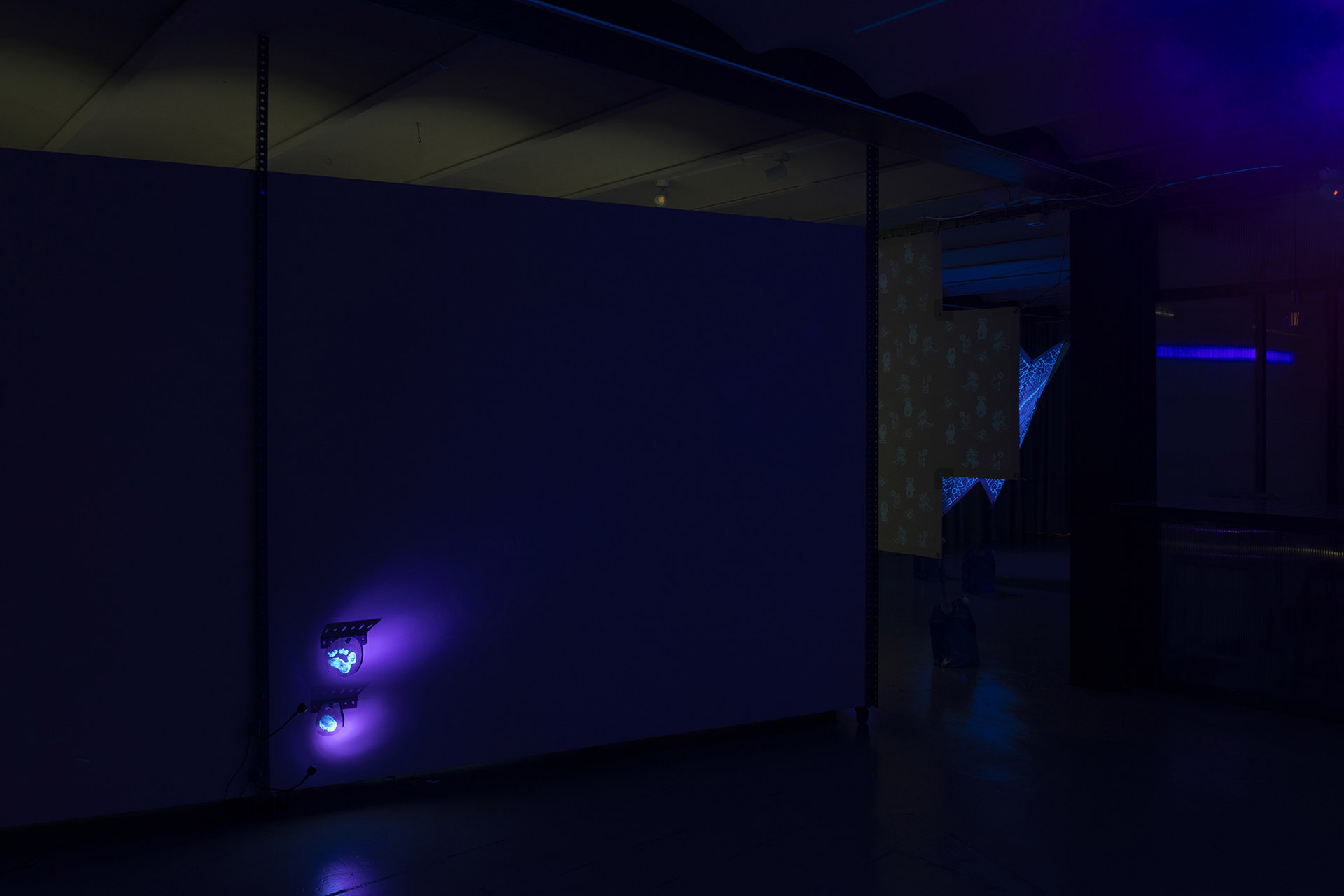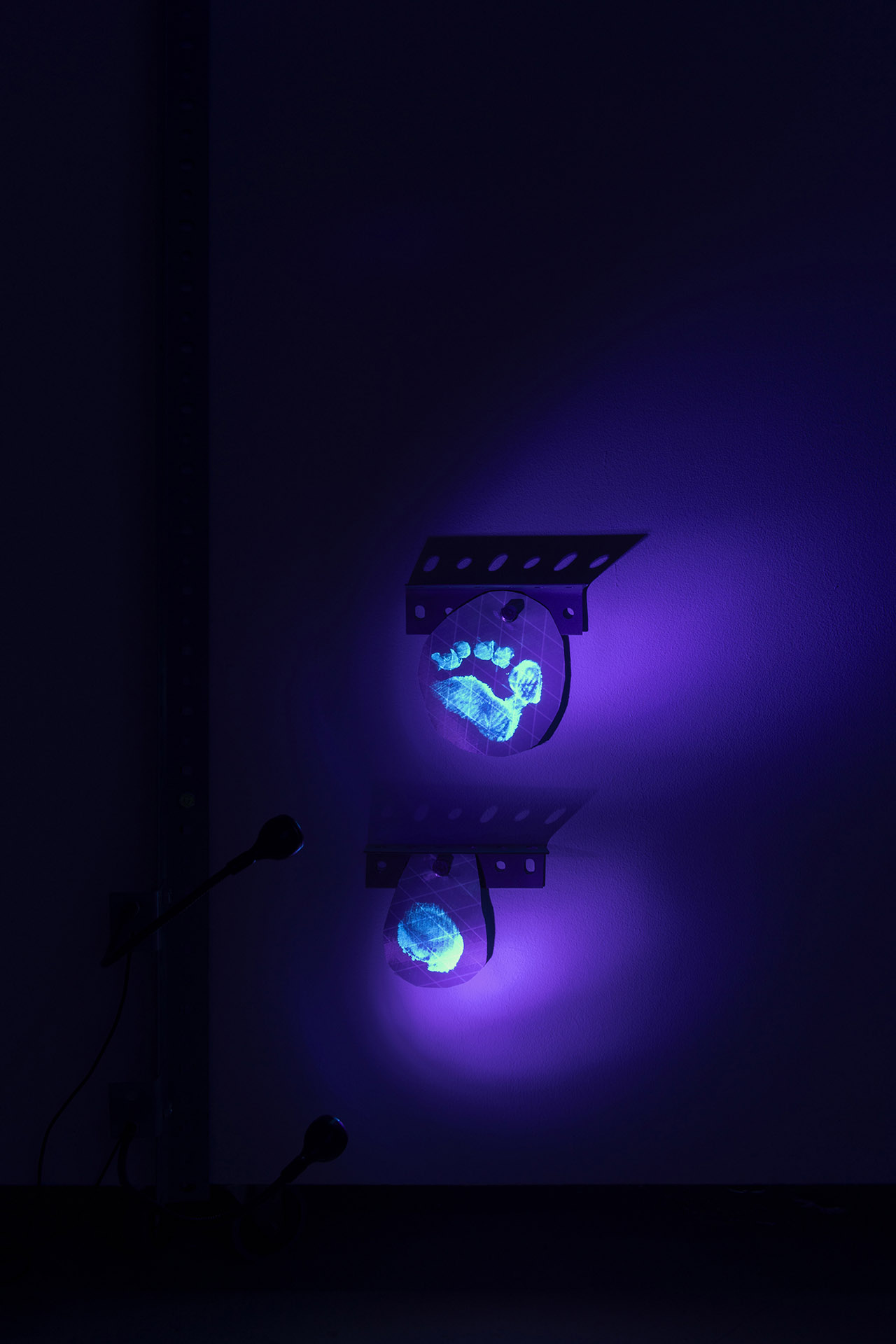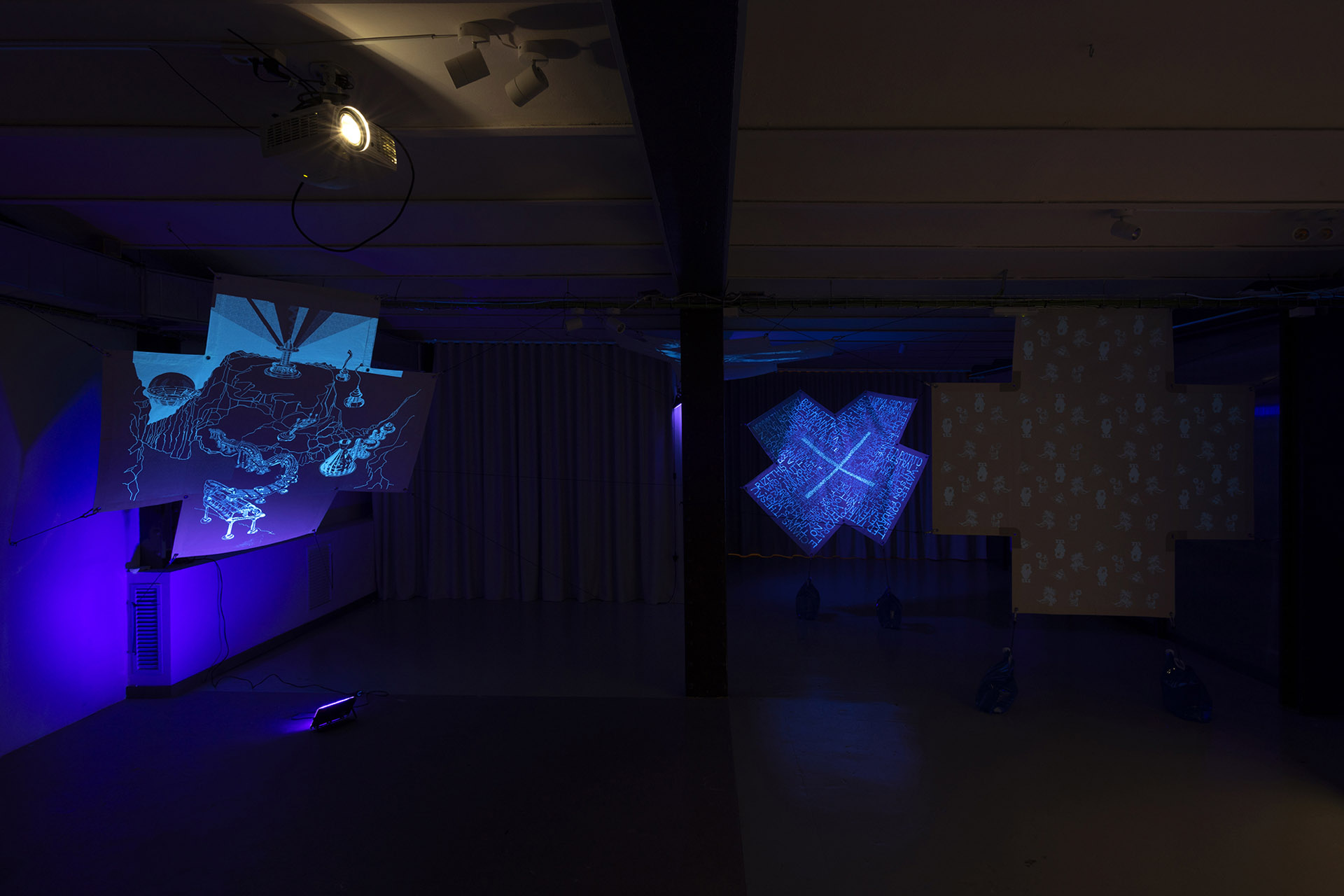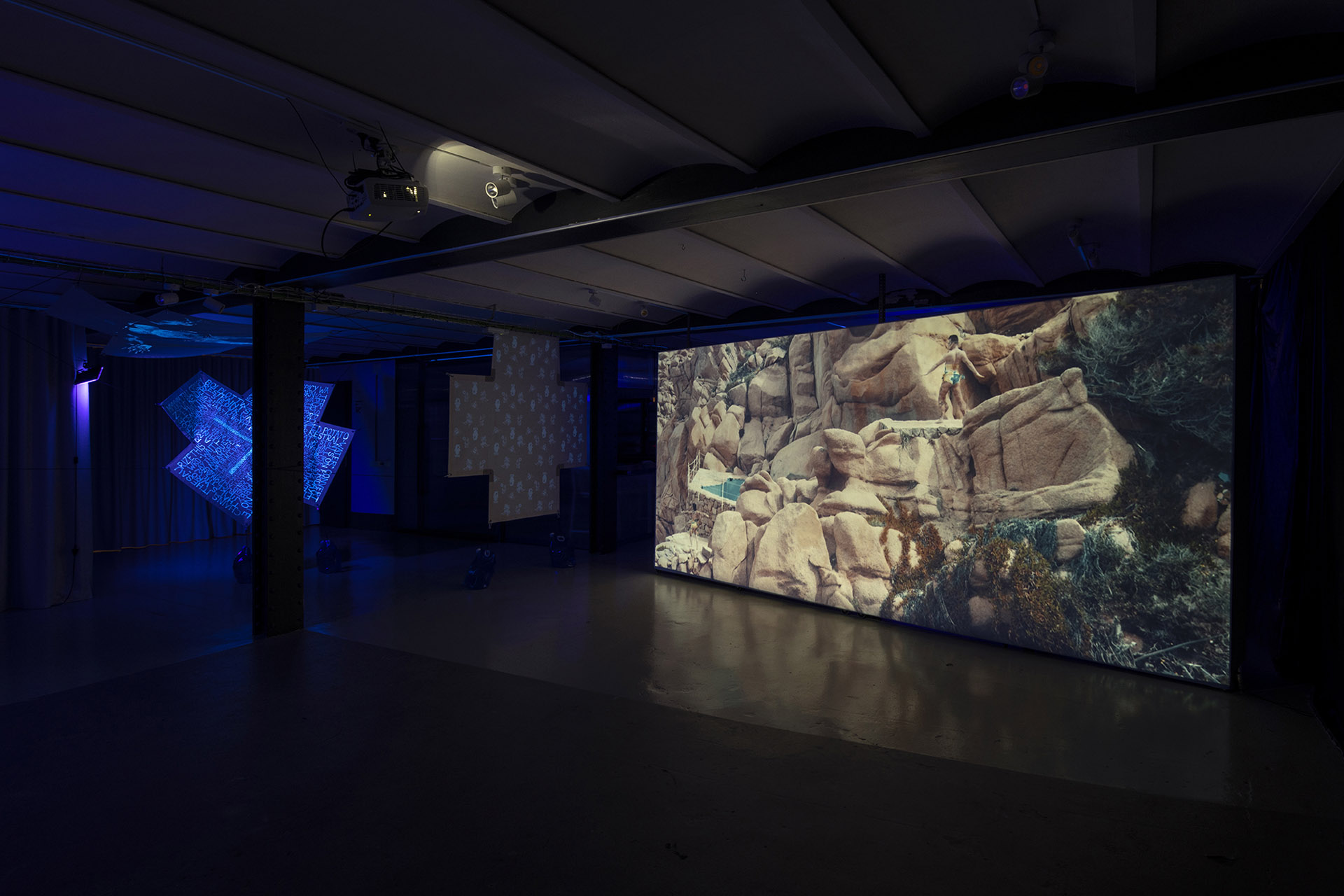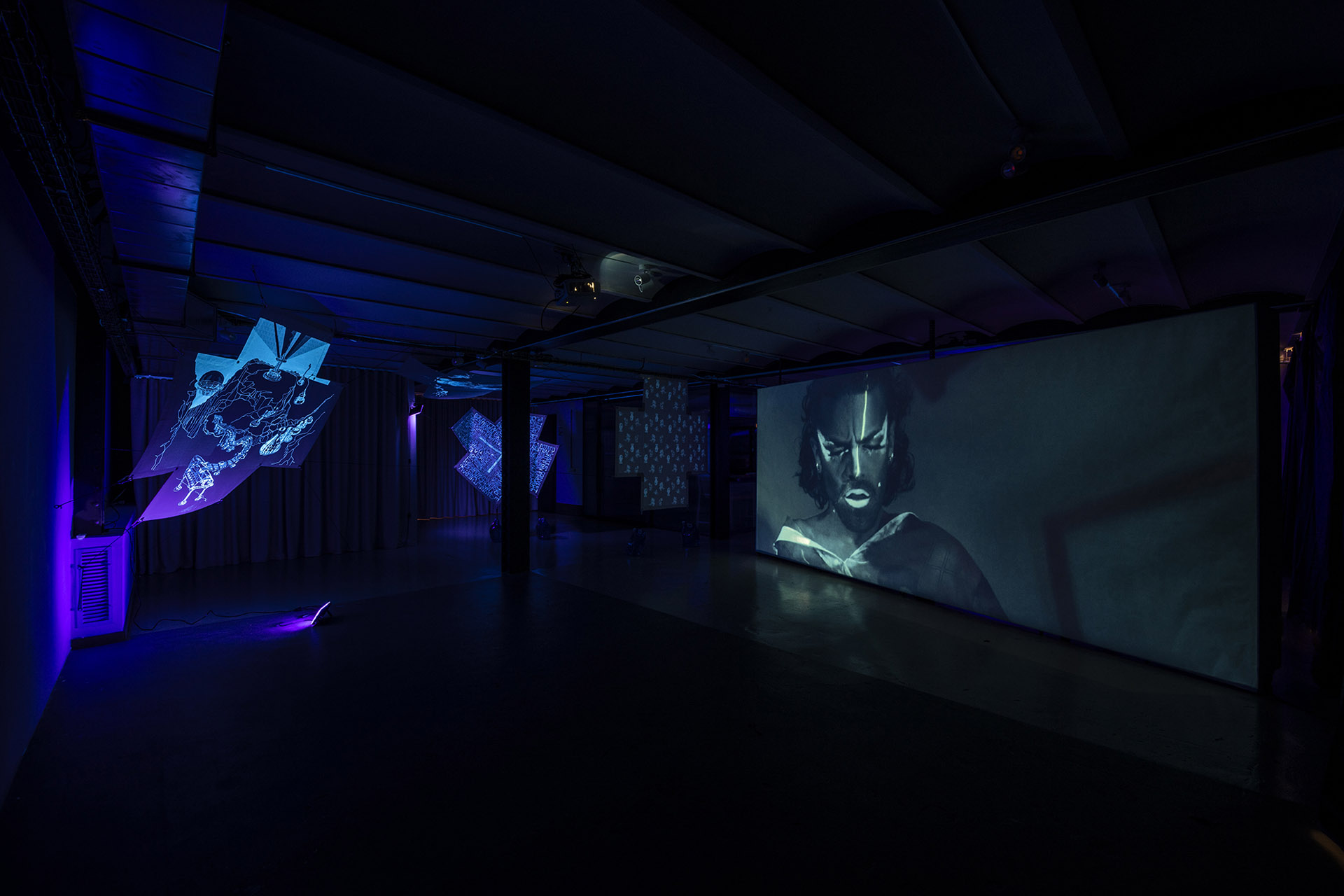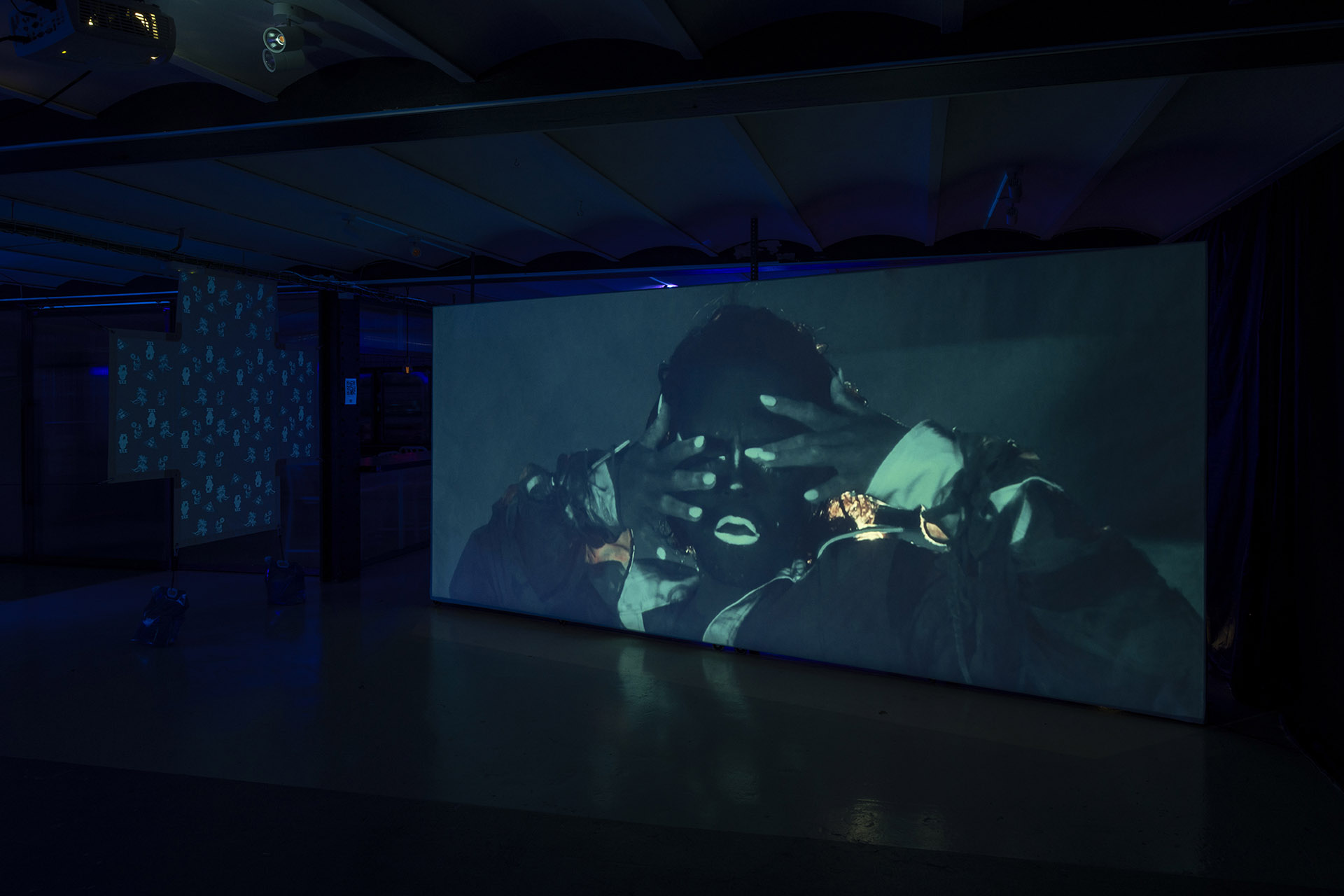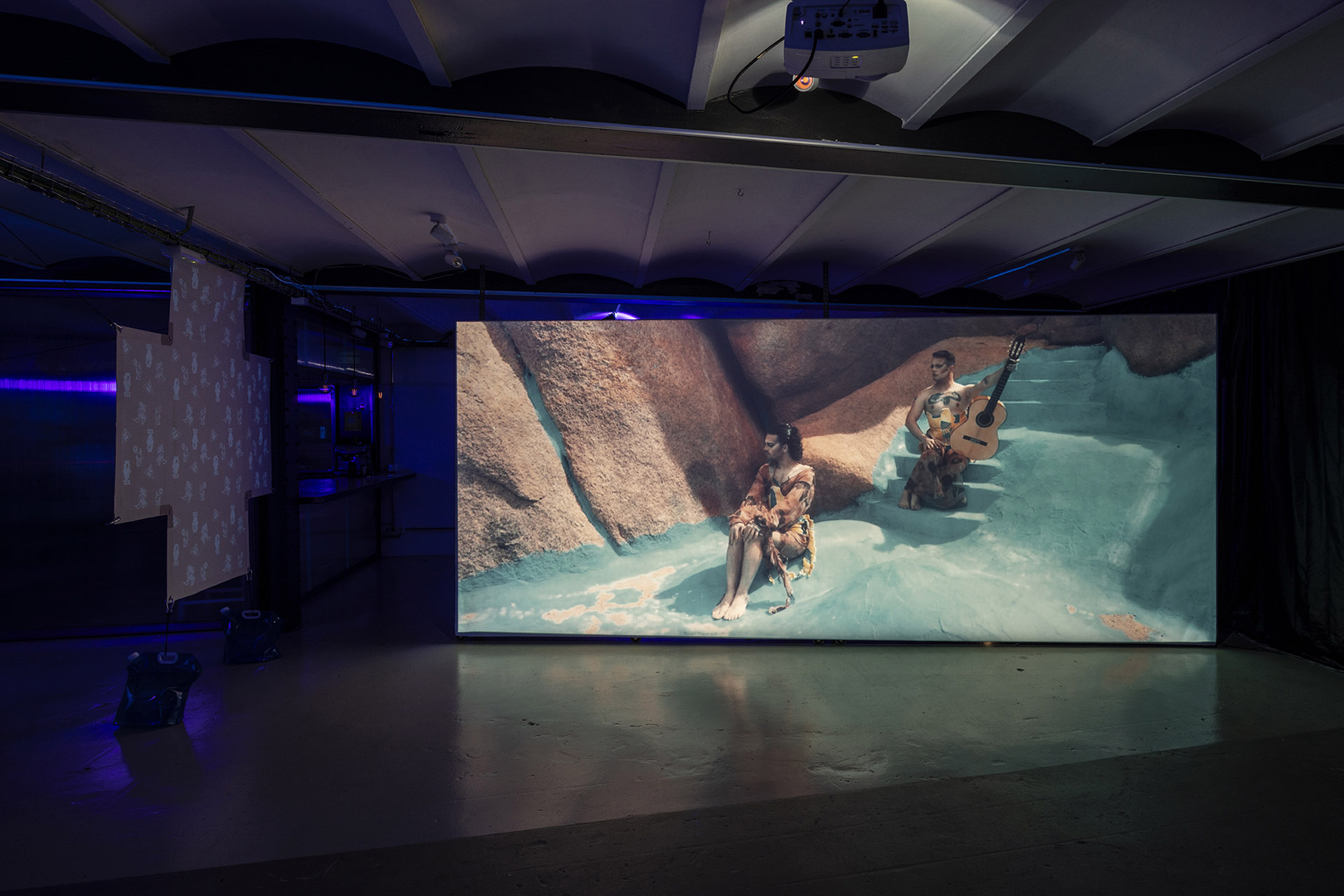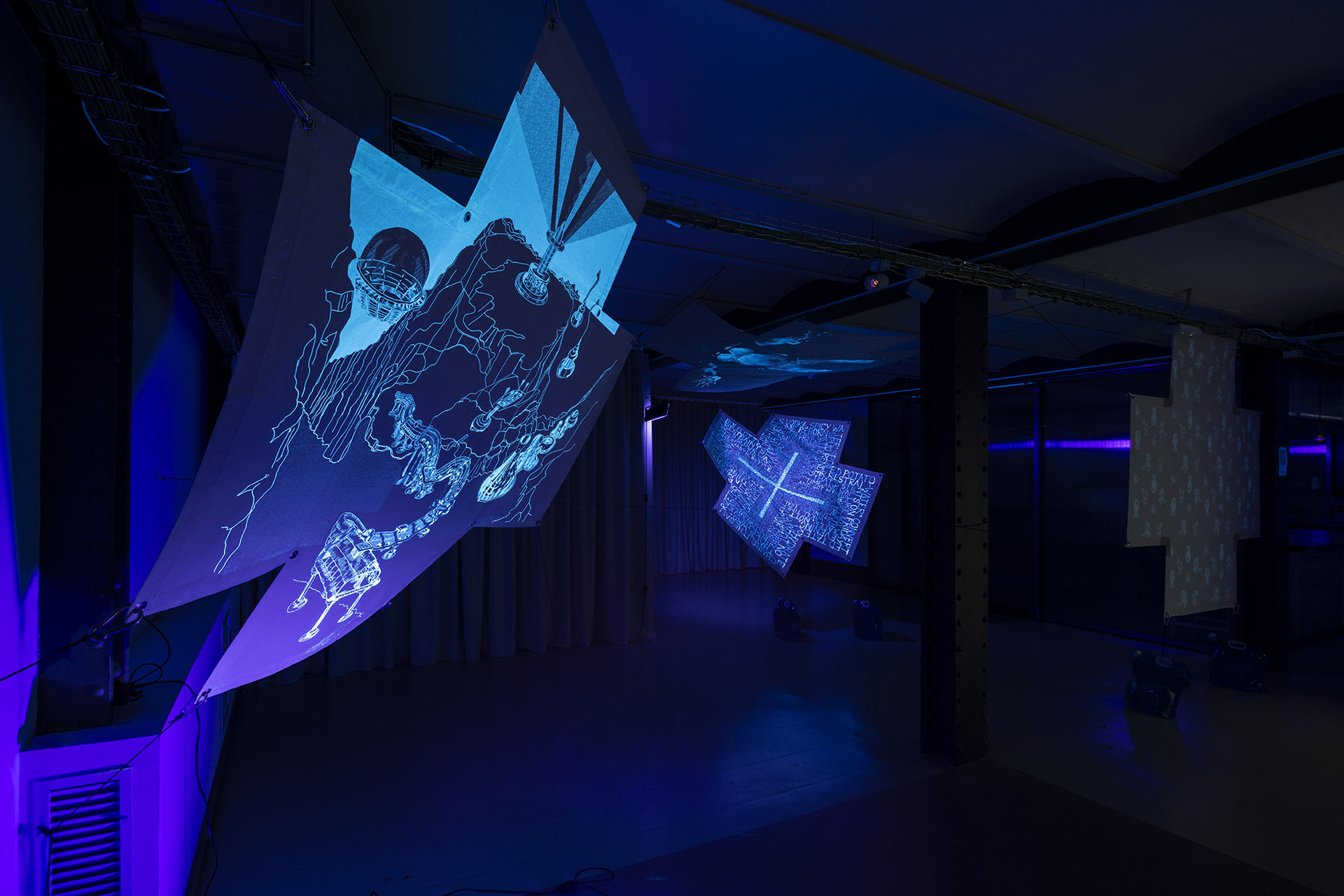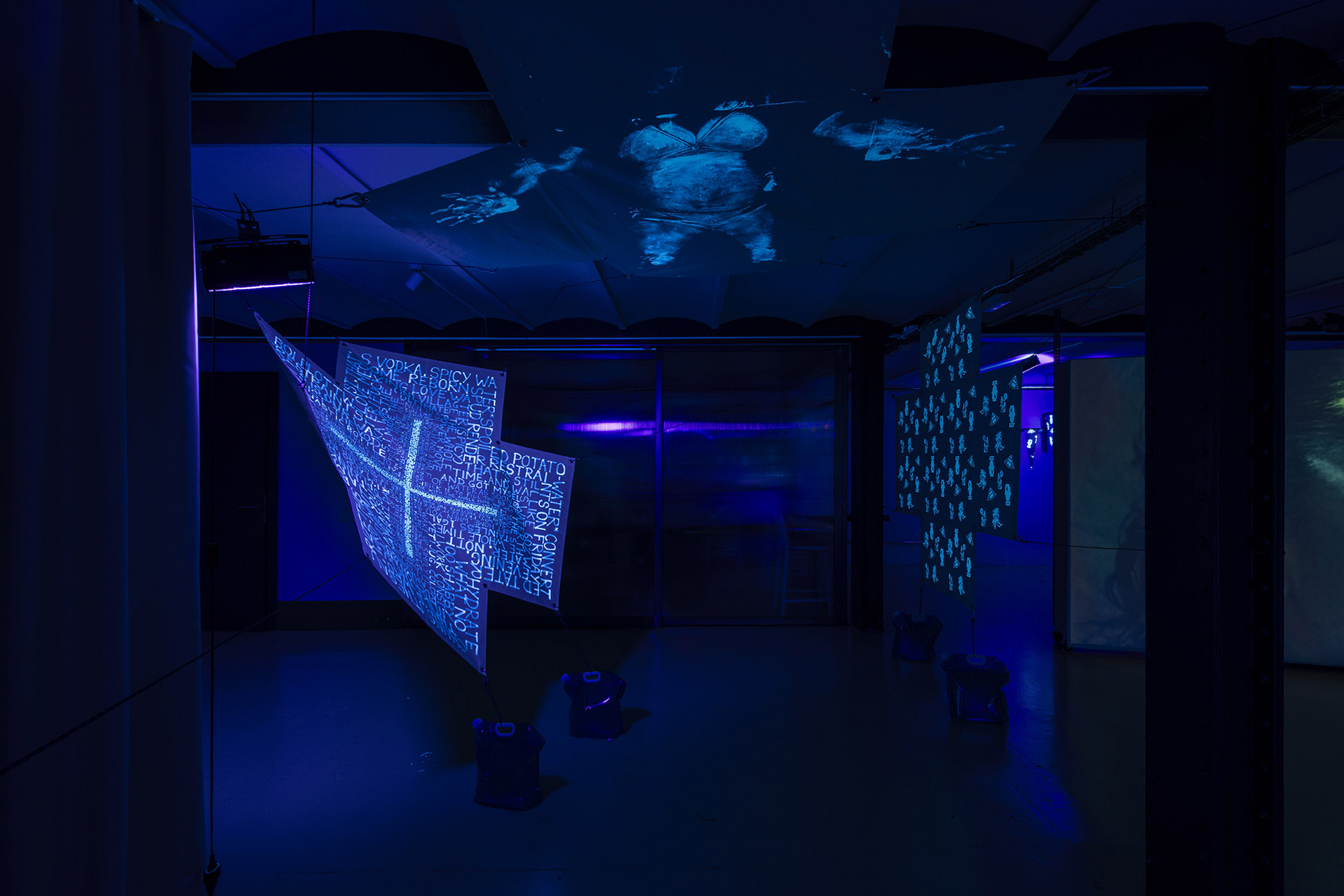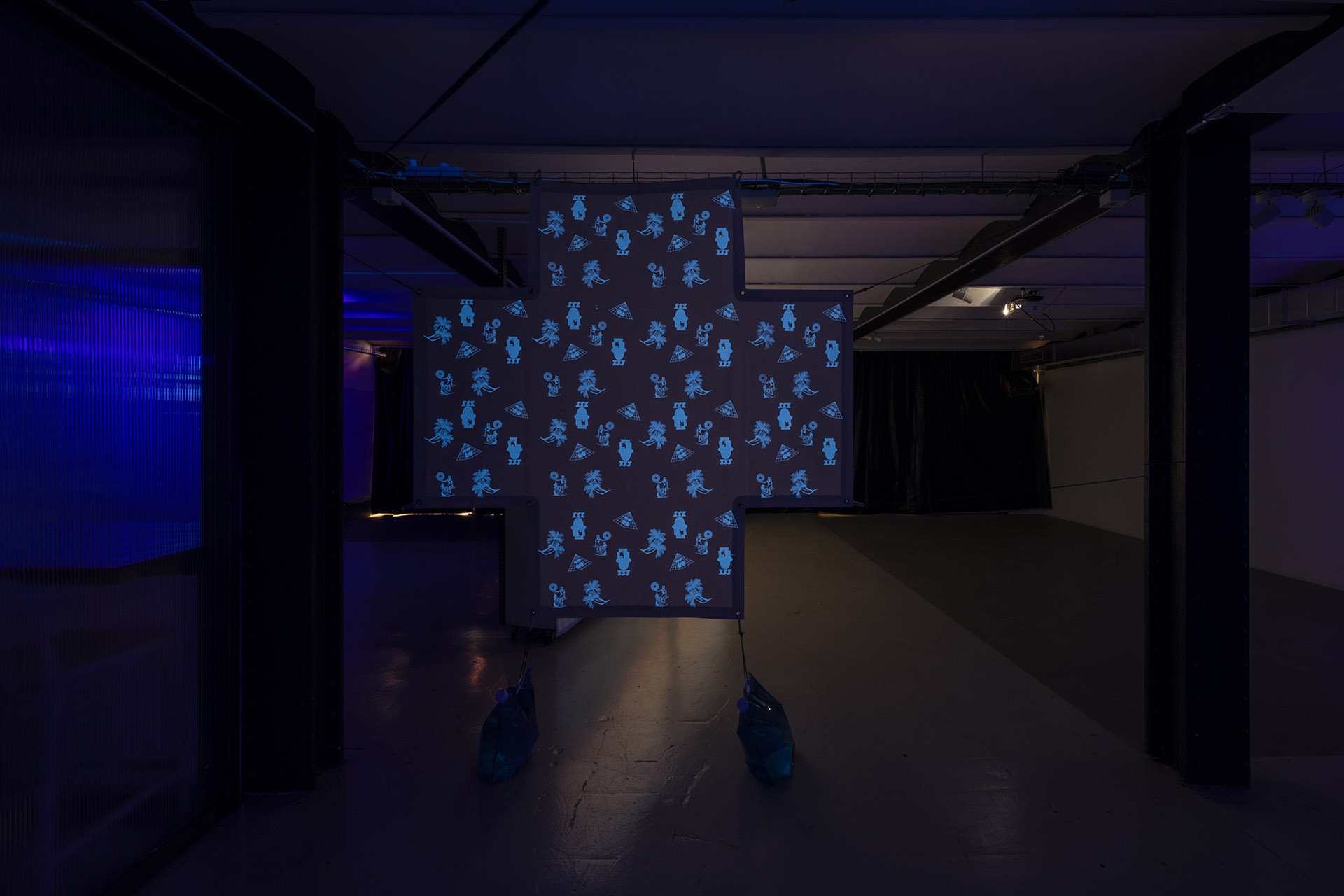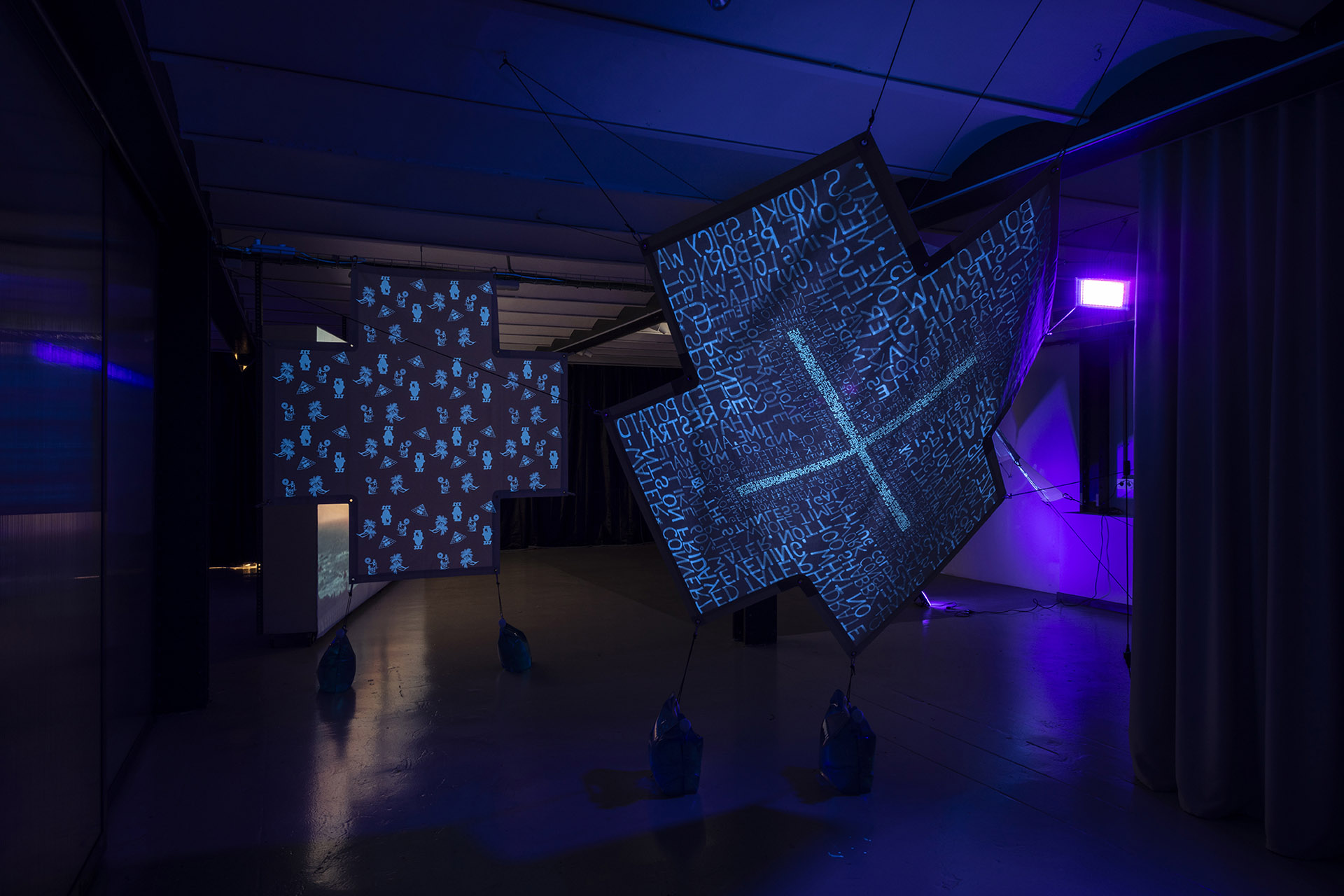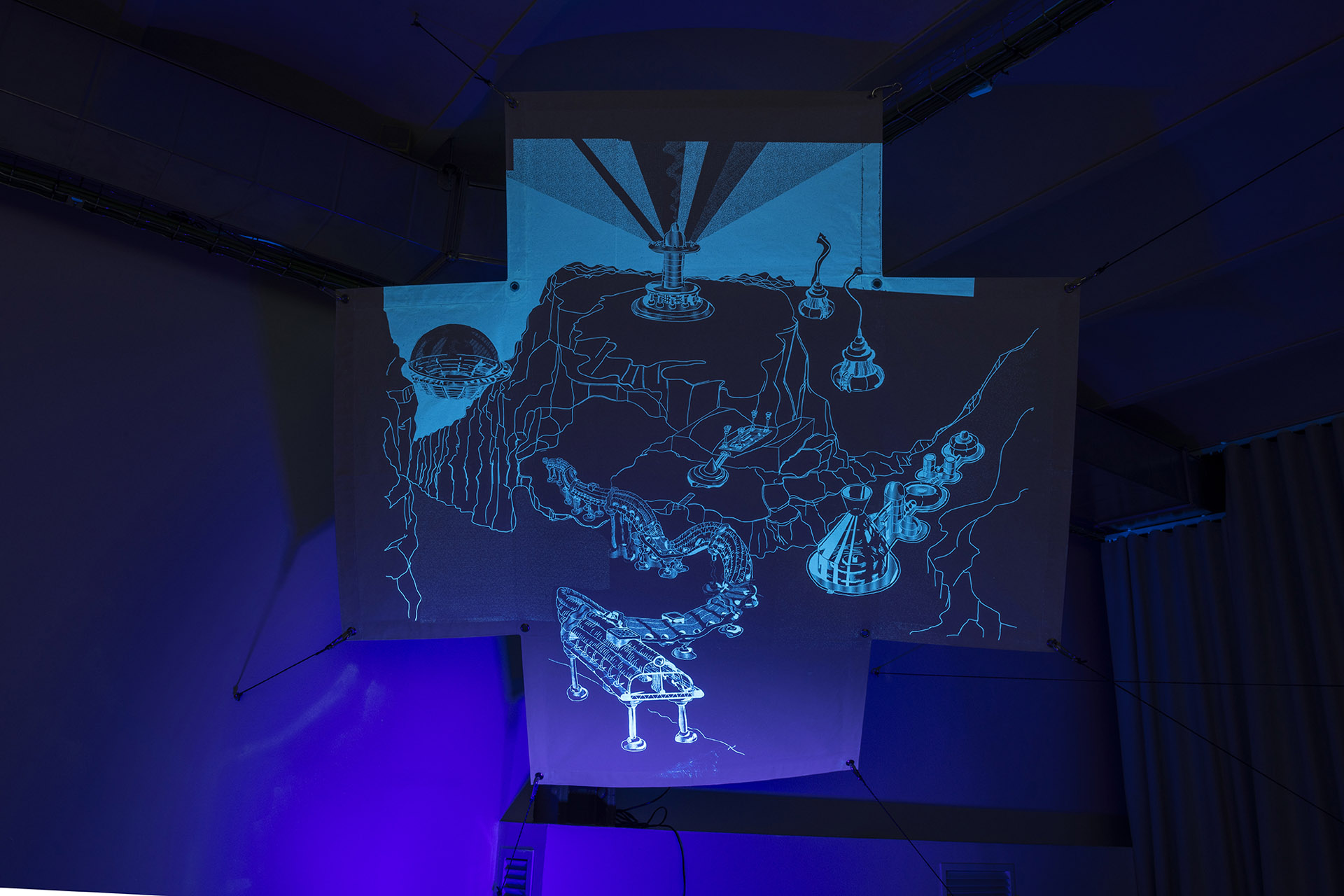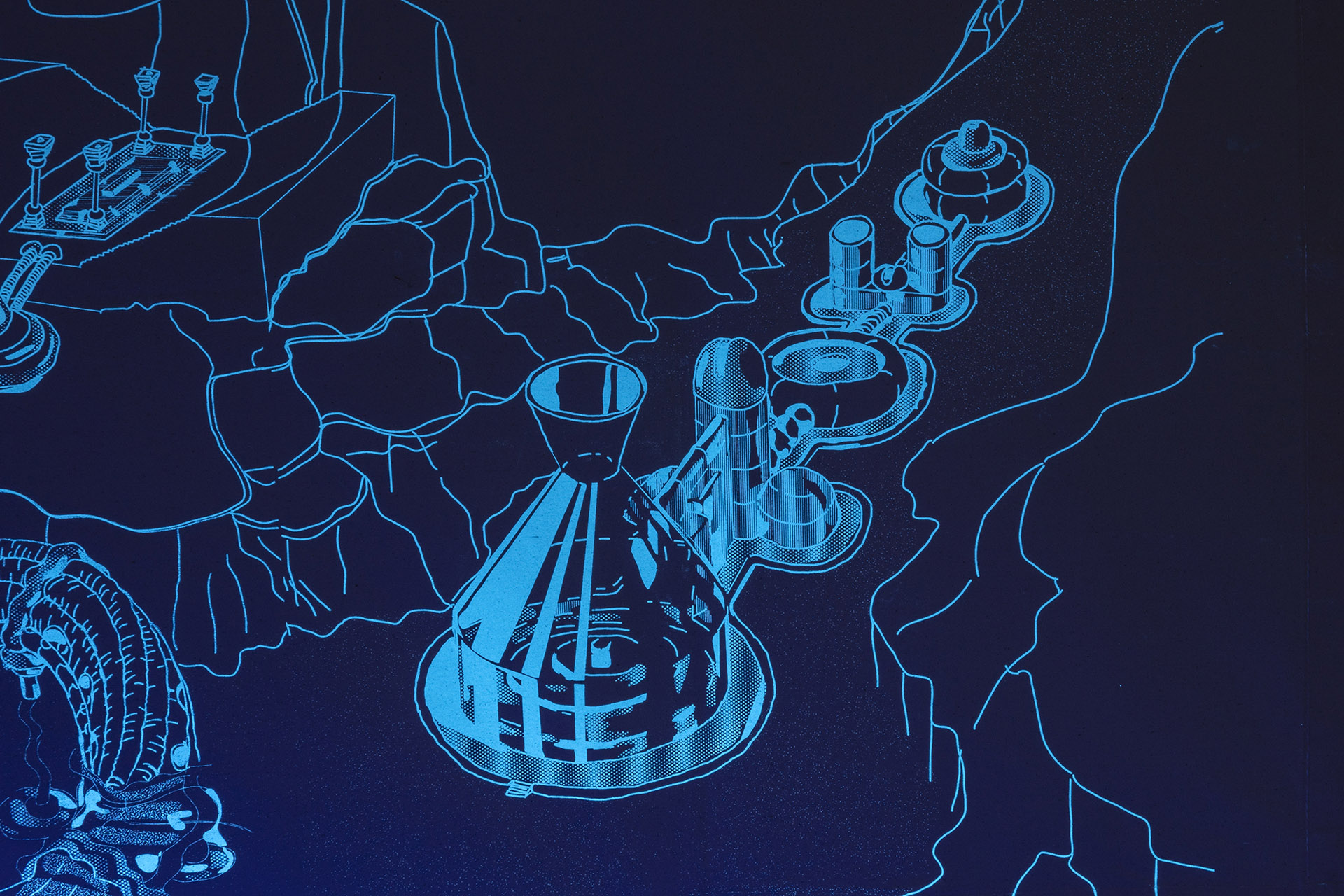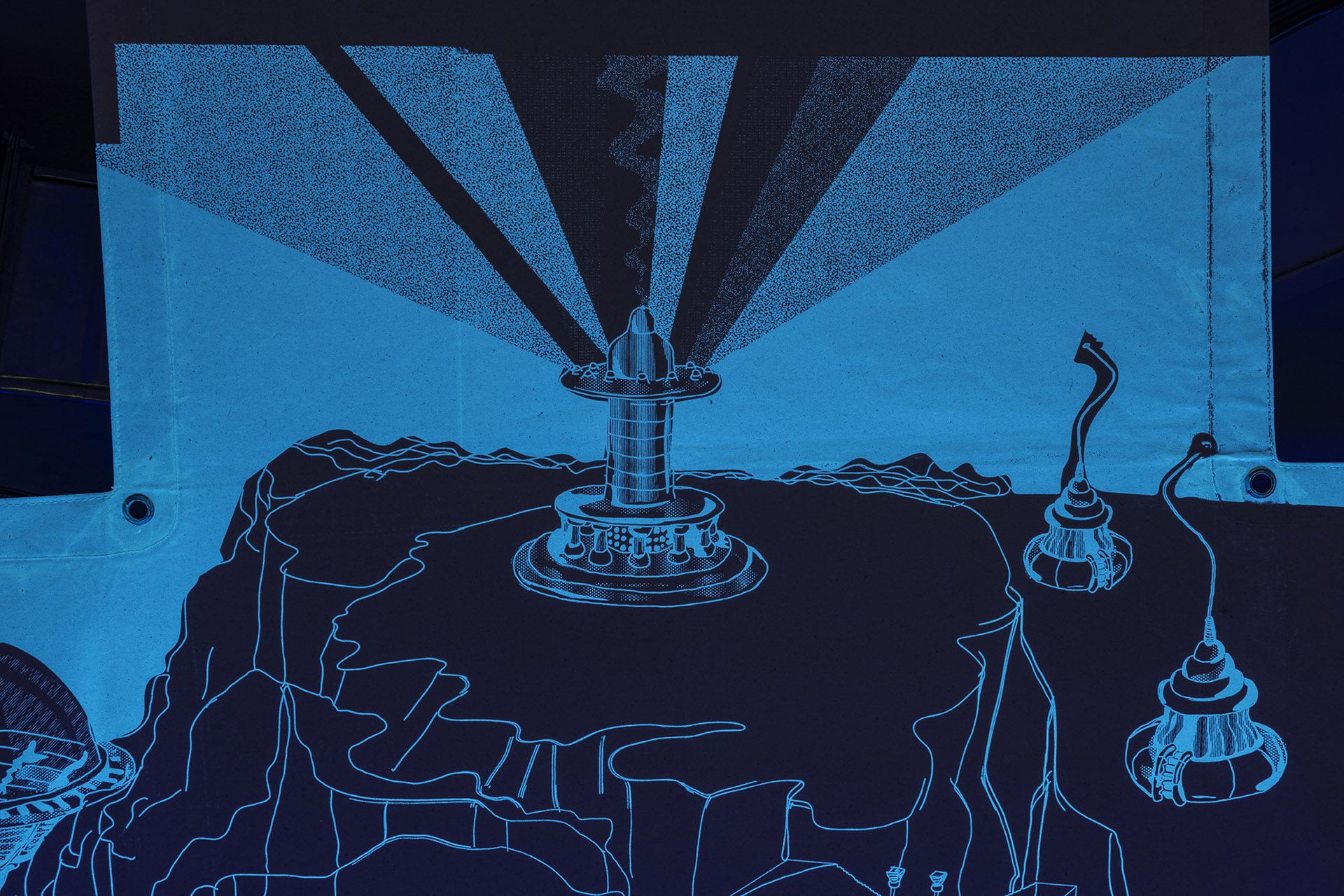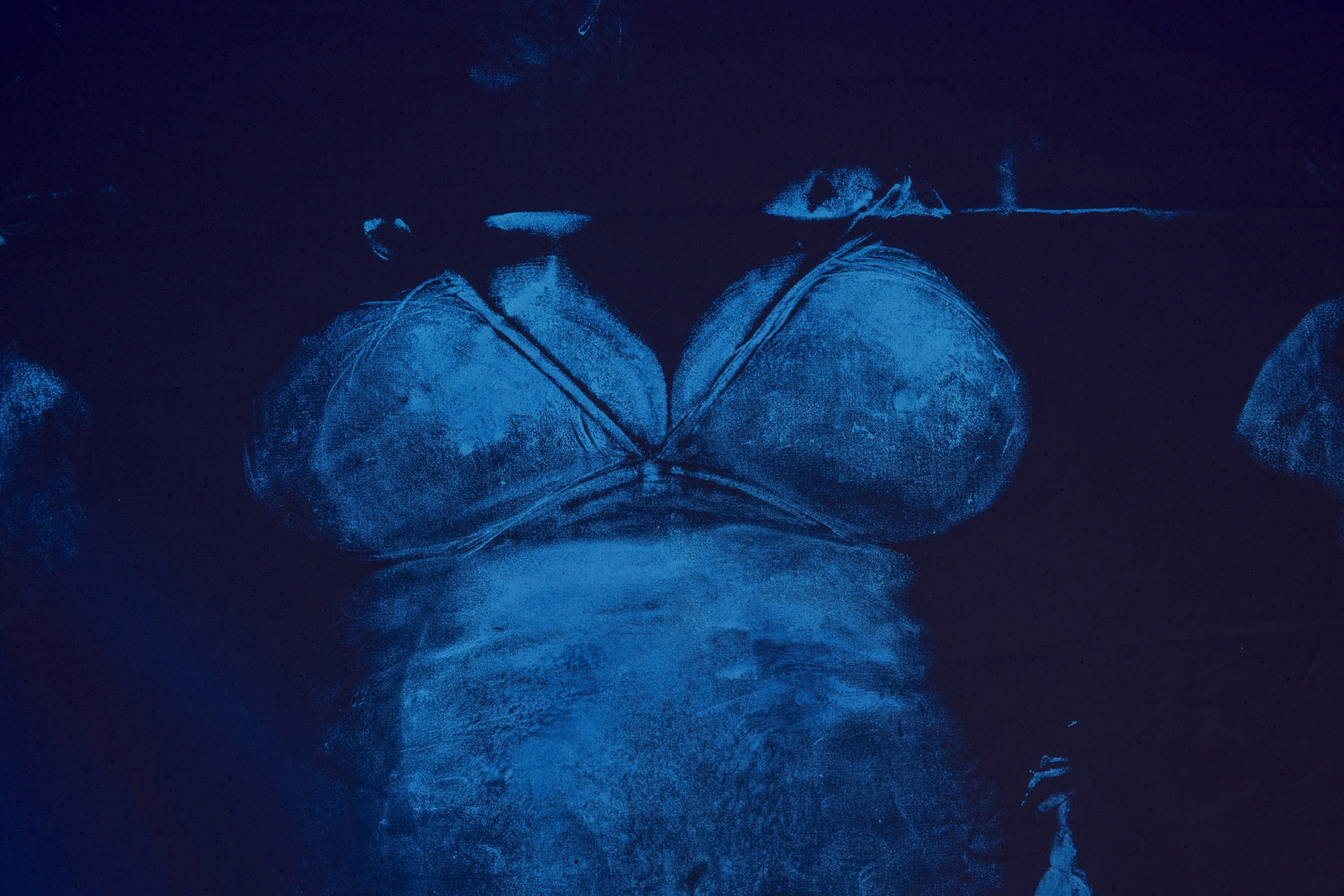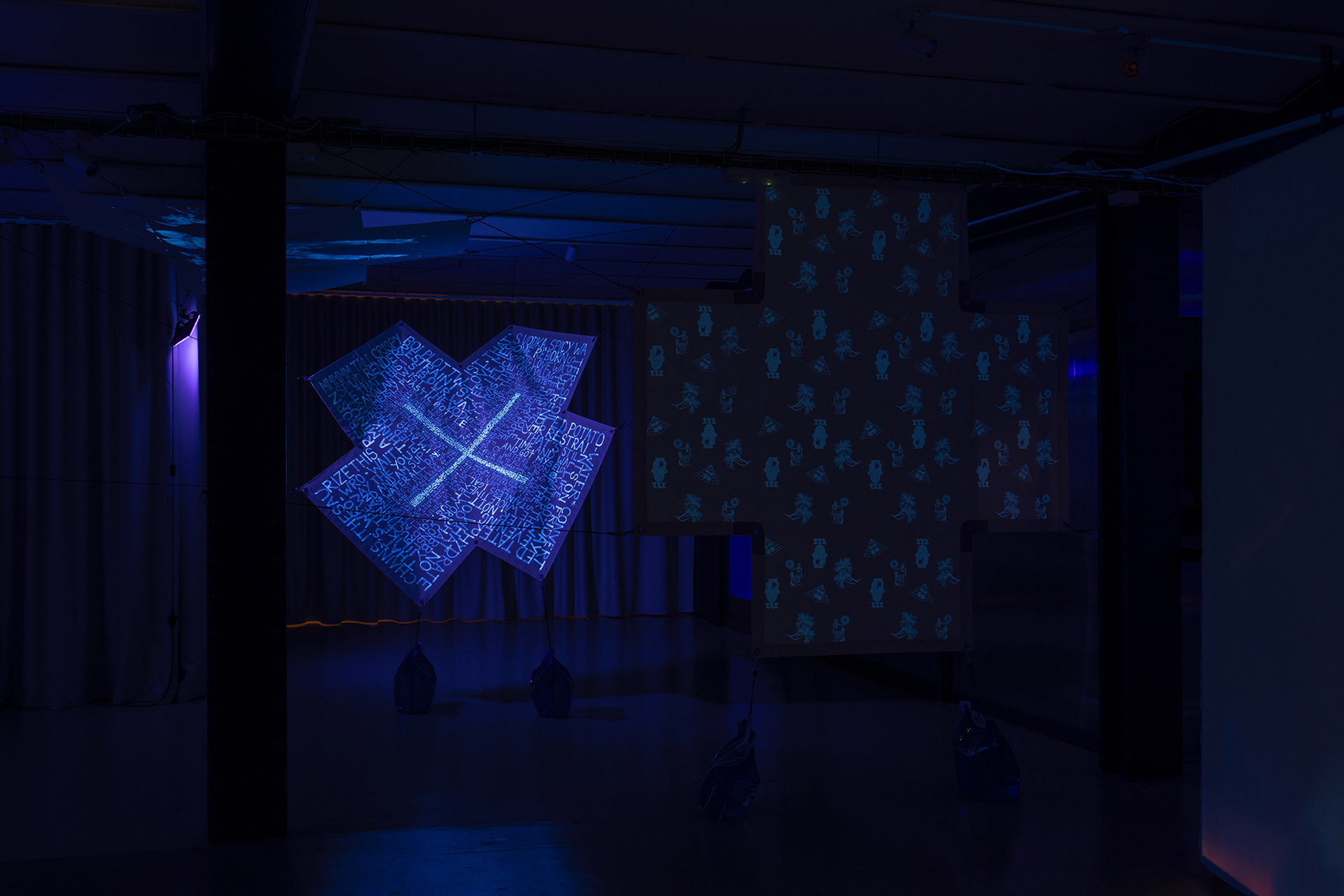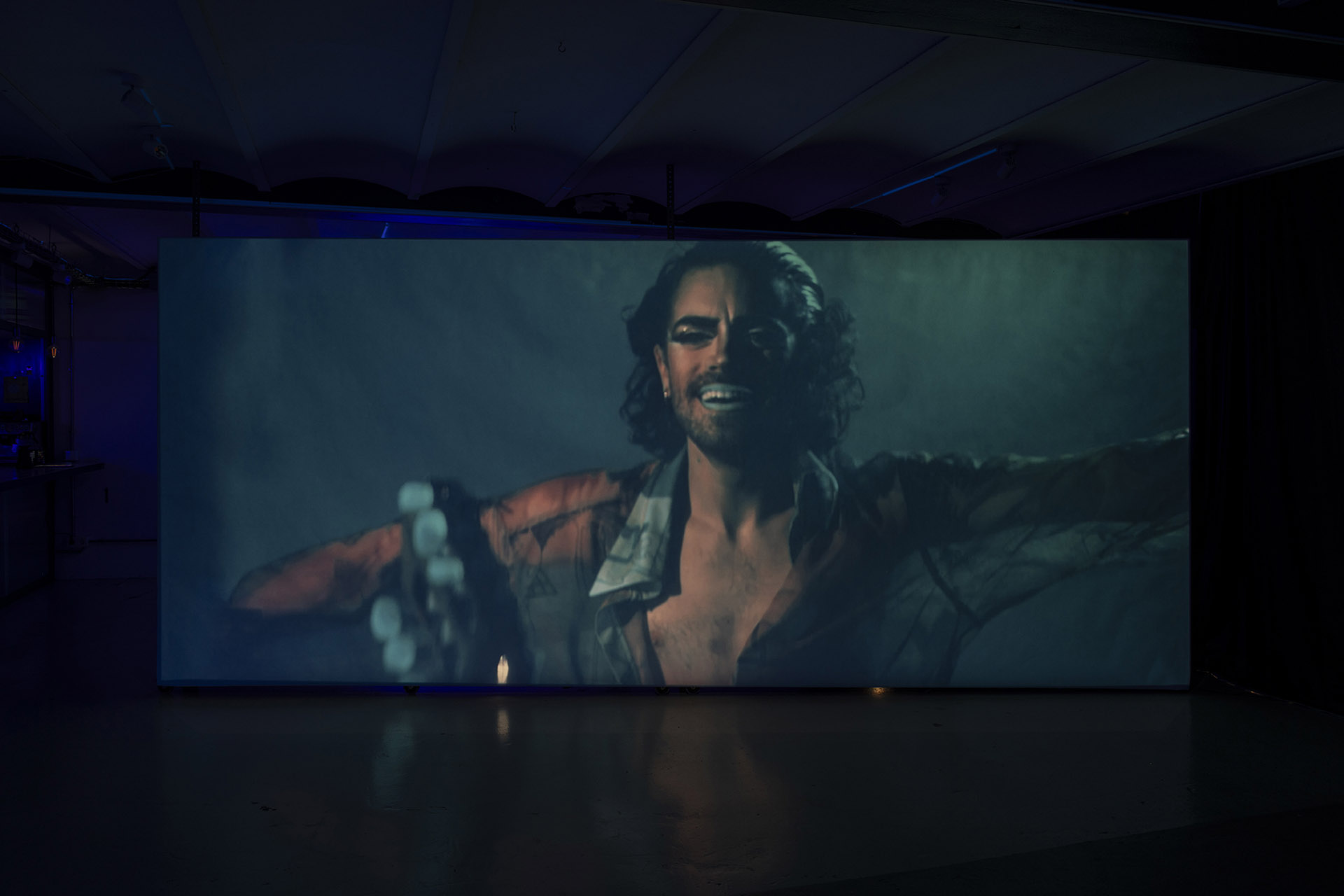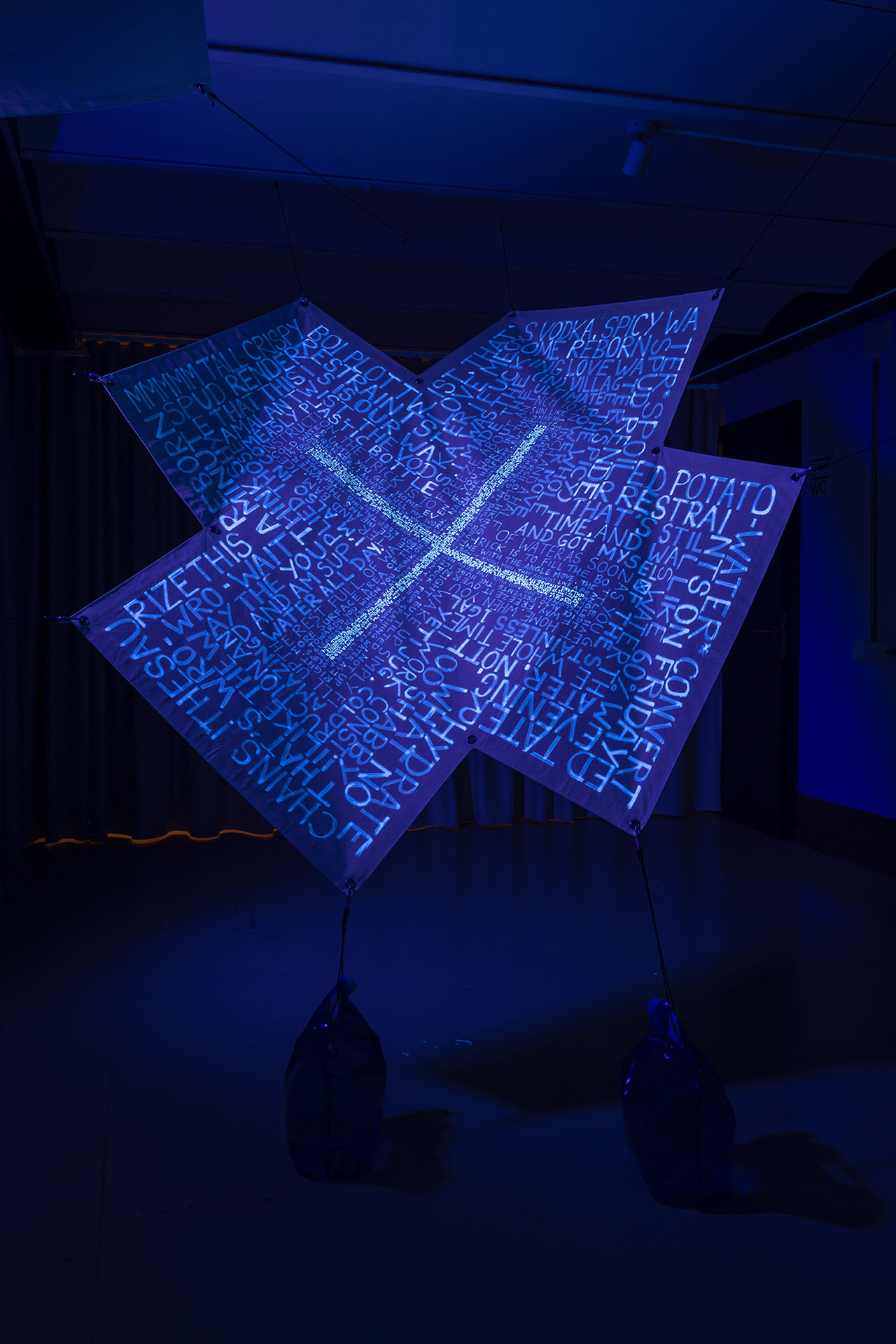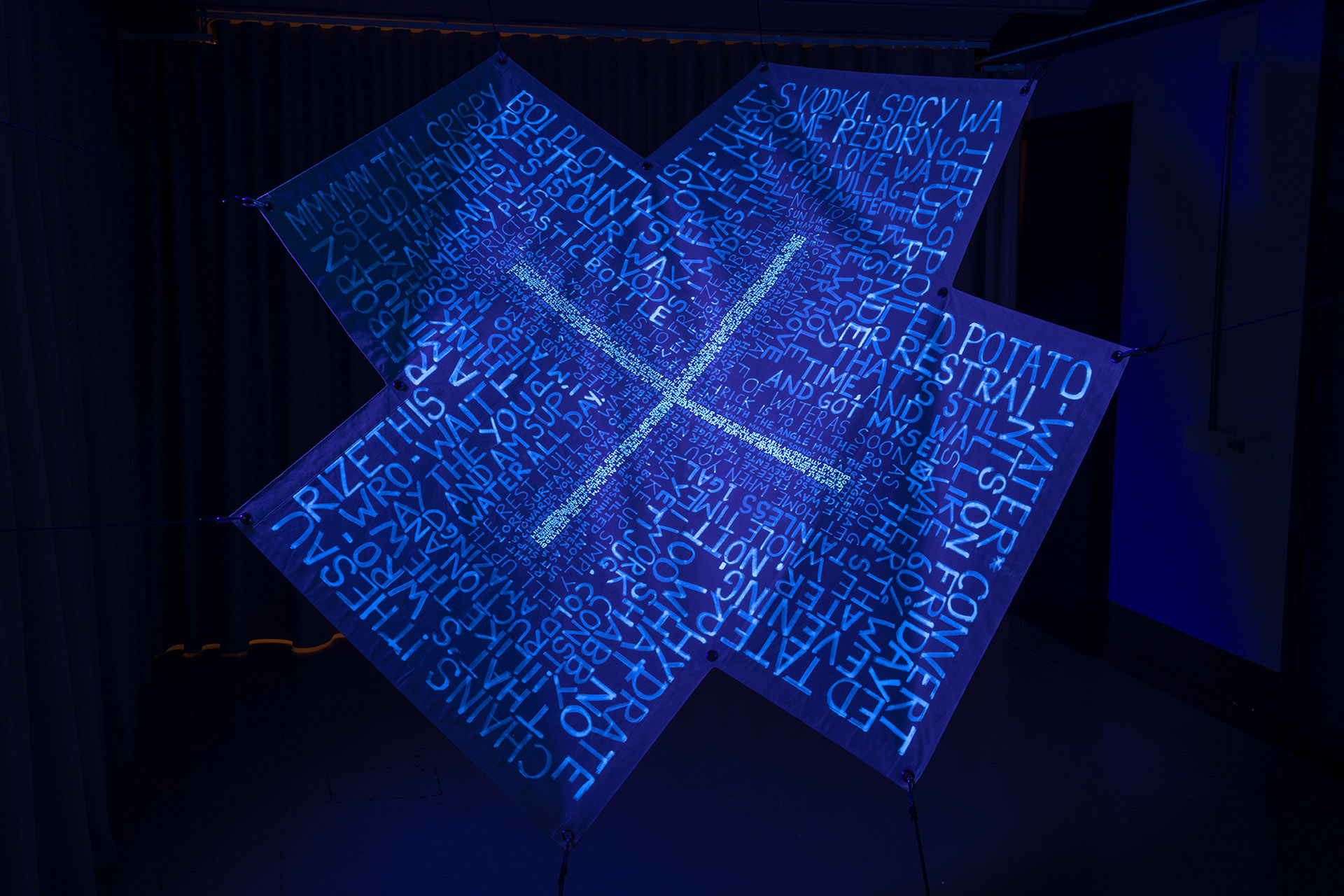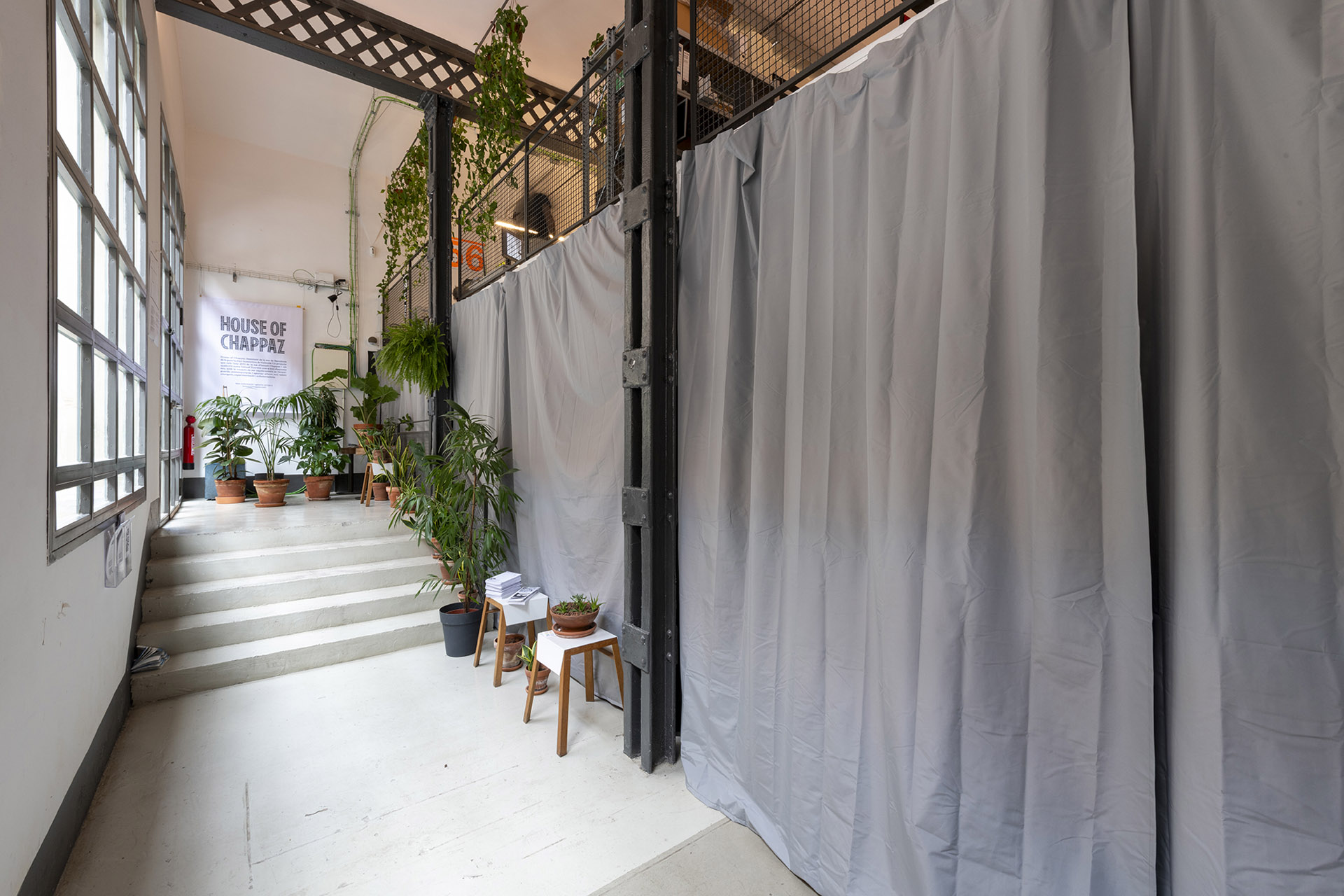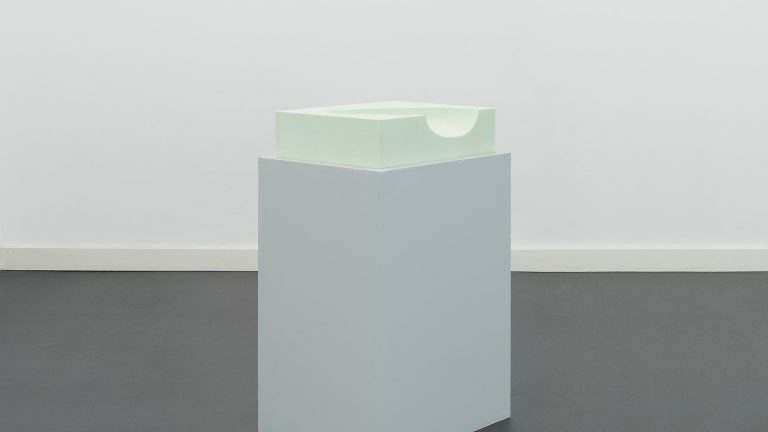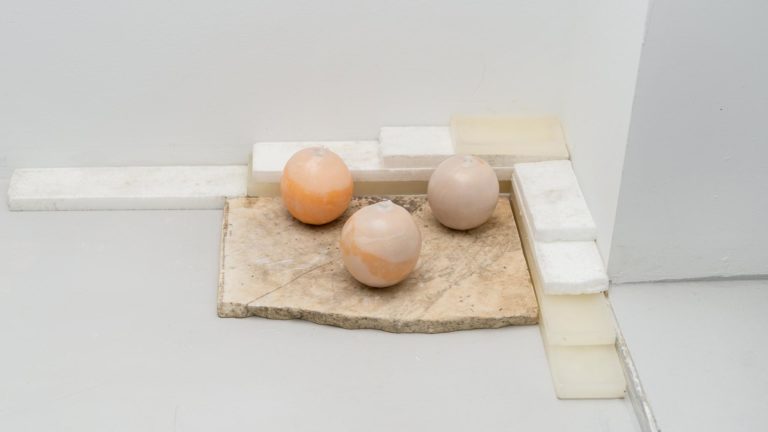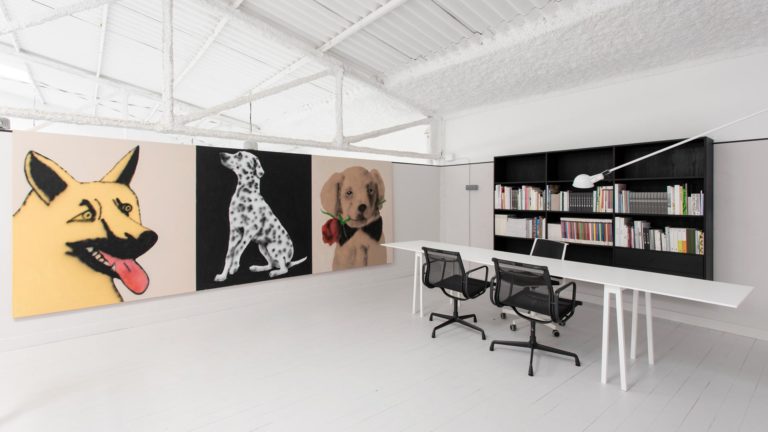Artist: Anna Moreno
Exhibition title: Costa Paraíso
Venue: House of Chappaz, Barcelona, Spain
Date: June 28 – September 1, 2023
Photography: ©Roberto Ruiz / all images copyright and courtesy of the artist and House of Chappaz, Valencia/Barcelona
With an artistic practice whose prolific output ranges from the making of films, texts, objects, and installations, Moreno’s work focuses on the inconclusive nature of events, putting to test the idea that our present not only suffers from its need of virtual immediacy, but is also haunted by past utopia. In other words, what happens after the event? Can the impact of past utopian projects, even if failed, be still seen or felt in our present? By engaging with dystopian narratives, progressive architectural forms, and speculative literature as a means to reflect on this very (human) history and its increasingly non-human future, Anna Moreno’s works invite the viewer into uncharted territories, between the documentation of actions and the creation of fictions.
In 2018, she began an investigation into Global Tools, a pioneering pedagogic project founded in 1972 by several architecture studios and individual practitioners belonging to the so-called ‘Italian radical design’ movement. Global Tools championed a reinstatement of manual work and the use of simple technologies, placing the body as the seat of architecture, a nucleus of latent political and creative potential. In the aftermath of avant-garde experimentation, these episodes not only pushed the boundaries of design and architecture beyond utility, their attempted utopia has also fuelled the imaginaries of futures to come, in some cases more successfully than others. Away from a discourse which looks at these histories objectively, in 2023, Moreno chose to expand on these topics through a more poetic and fictional lens. For COSTA PARAÍSO, the artist re-conceptualises the holiday village of Costa Paradiso, in Sardinia (Italy), as a destination where several of her fascinations intersect. The hollow island, as Moreno calls this non-linear narrative space, is a platform for sonic, visual and conceptual exploration. Sardinia, inhabited by humans since the Palaeolithic period, has been a battle site between European kingdoms, holidays for the super rich, as well as a site for architectural newness and decay.
Dante Bini’s Cupola, one of the buildings present in Moreno’s new video work, is a seemingly forgotten dome made in commission by Michelangelo Antonioni in 1969; a testament to the Italian architect’s vision for a new mode of living, aligned with the grandiose wish of the film director for refuge from urban life. Built entirely out of reinforced concrete, the Cupola’s walls were shaped by a gigantic inflatable that rose from the ground using propelled air; a radical negotiation of inside and outside, hollow and solid. By departing from a similar premise, Moreno looks closely at the natural landscape of the Sardinian coast, trying to understand through the bodily presence and movement of her performers, how one might inhabit that space; at times a paradise cut-up, at times a haunted geography, with its forgotten and locked away holiday homes.
In the array of sculptures and prints that compose this exhibition, she draws on a quintessential Mediterranean nostalgic imaginary, which incorporates everything from 1970s club culture and music videos, to the arcadic paintings of waves crashing on rocks. Instead of referencing each of these categories as separate entities, she has chosen to make them her own, resulting in a shared maximalist sense of joy that is both infectious and irresistible. This joy is celebrated in the video that gives name to the show, COSTA PARAÍSO, through collaborations with several artists (a characteristic trait of Moreno’s practice). In the video, we see Barcelona-based duo, Flamenco Queer, as near-alien figures who explore and occupy the island. Their musical project subverts traditional flamenco performance and rejects gender binarism, embracing alongside Moreno, a kind of queer theatrics that functions as the right propeller for the spiral narrative they embark on.
Dancing, present in some of Moreno’s previous works, becomes the vehicle with which we are invited to imagine an island with several entries, exits, and secret passageways; environments through which bodies, colours, and motifs can circulate. These transitions, between time and place, histories and geologies, appear then to be the hollow, which Moreno refers to. Moreno uses dance as a form of inhabiting the landscape; a key proposition of her project, and one that is extended to the viewer as a fragmented poetic discourse. Dancing in COSTA PARAÍSO, can be seen as the moment of rupture from which new opportunities arise, when the impossible becomes possible, disrupting the flow of linear history.
-Bernardo Zanotta


